The Forgiving Tree
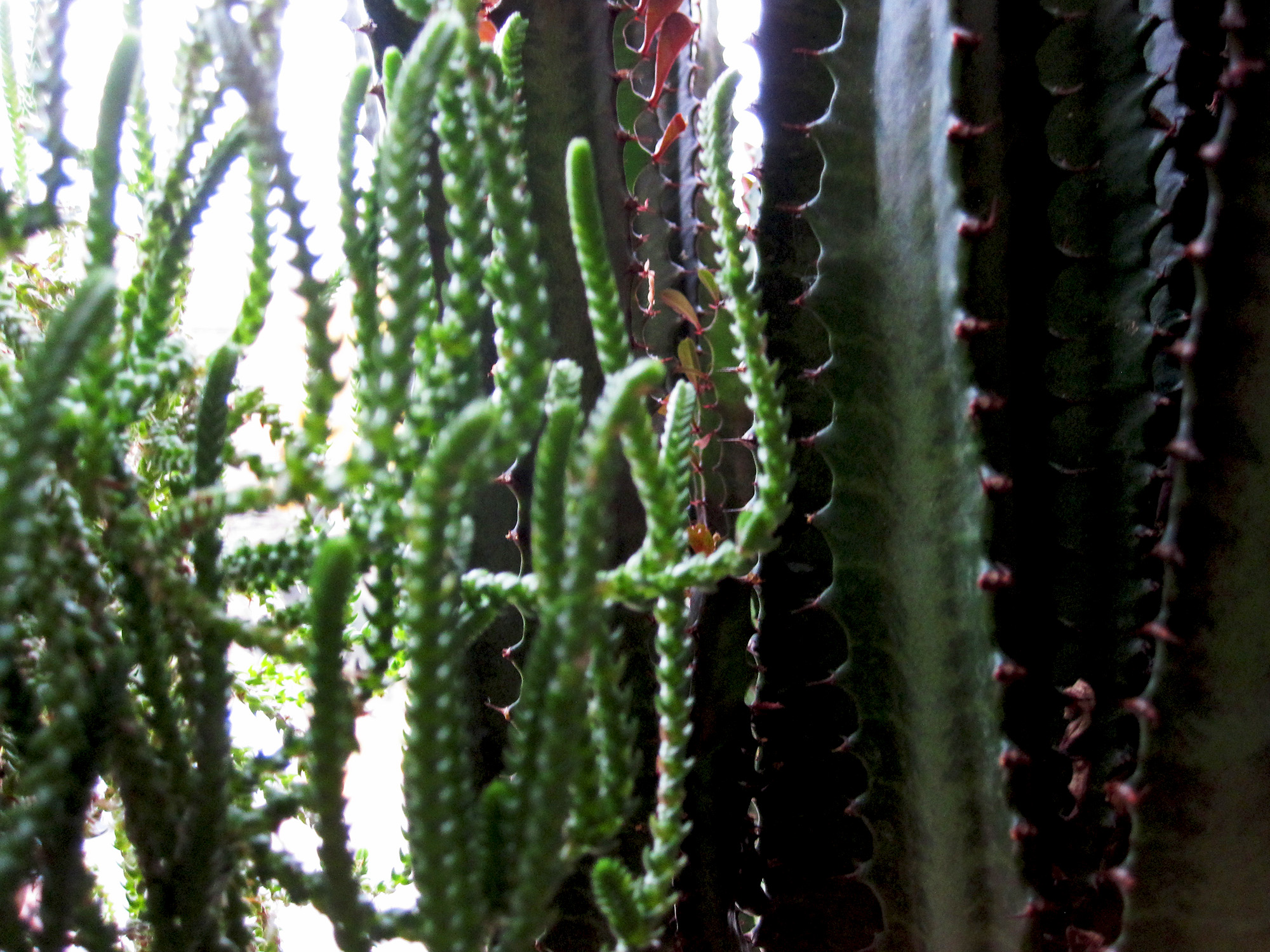
Like many living things, and some people too, plants are experts in communication and forgiveness. They’ll give off signs of distress when something’s not quite right. If you can figure out what’s going on (and be patient), they’ll perk back up and shoot out new roots. They’re supremely adaptable. So despite my deep devotion, most of my plants have experienced some level of trauma. It’s rarely been dire, though in those moments I’ve tried to pay attention and adopt some of the quiet lessons they teach. Perseverance, subtlety, flexibility. Remembering that it won’t always be perfect. That growth happens in both directions.
Four years ago, I brought home a small African Milk Tree (Euphorbia trigona). It looked something like a greenish purple candelabra, with a few branches jutting out from the main trunk. Short prickly spines and clusters of teardrop-shaped leaves ran down along its ridged arms. It was sculptural and healthy and looked unlike any plant I’d previously cared for.
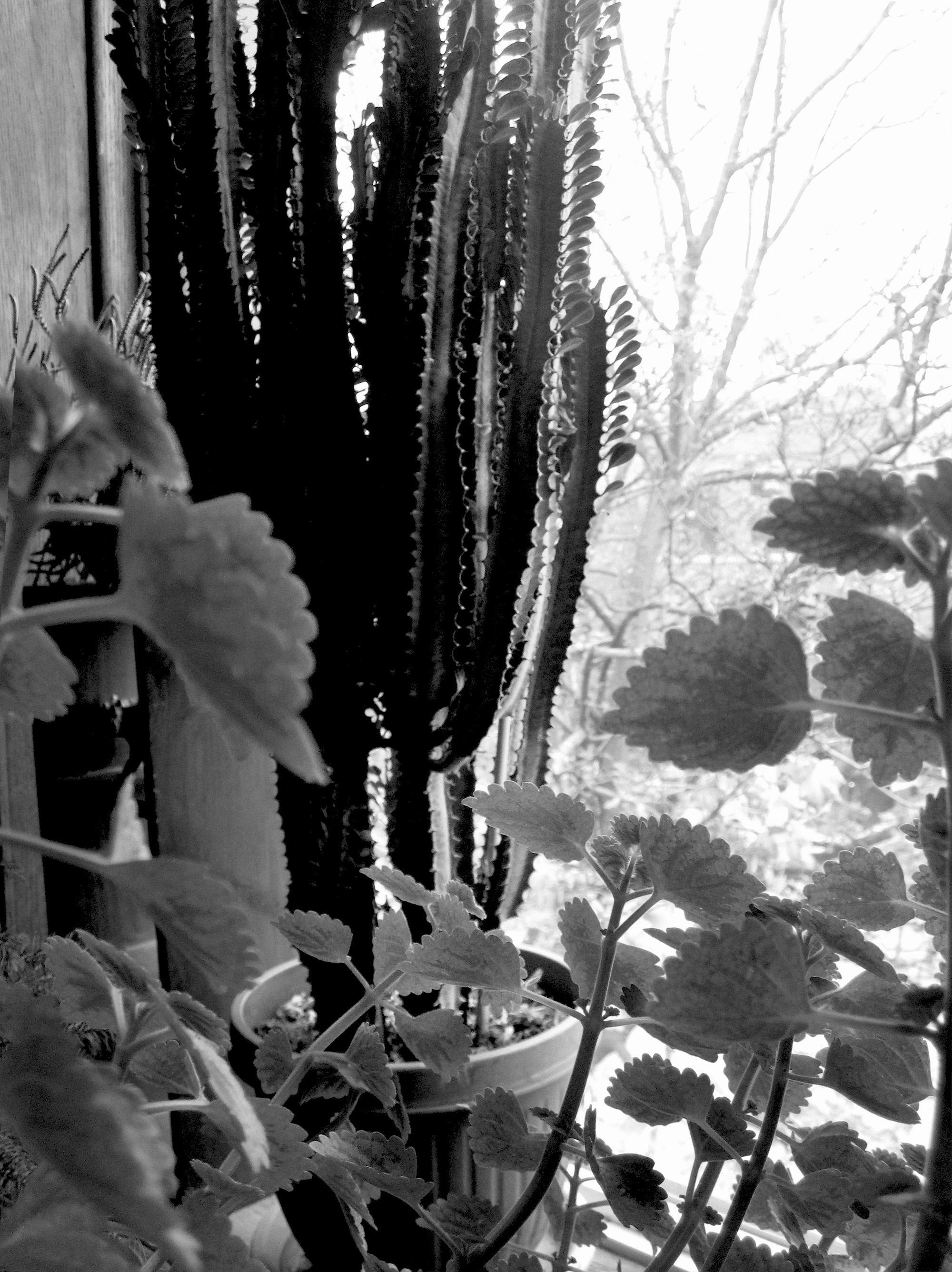
I stuck it in a place of prominence, on the western facing windowsill, the sunniest spot in the house. It seemed to settle in well, so I didn’t pay it much attention, watering it maybe once a month. Less in the winter, really whenever I remembered. I’ve learned that plants do best when you bring home the ones that will fit into your lifestyle. If you won’t remember to check your hygrometer daily, your fern collection is probably not going to work out. Likewise, if you love watering plants daily and have tons of time on your hands, you may mean well, but you could end up drowning your cactus.
The euphorbia and I were a solid match. It quietly reminded me of the huge desert plants I grew up around in L.A. and I welcomed the nostalgia, especially during the darker months when snow abounds and truly sunny days are scarce. I found a small kind of joy in noticing the plant’s seasonal growth spurts, changes in color, loss of leaves, and dormancy. I measured the progress of the passing months in number of new branches and handfuls of crisped up leaflets that I diligently threw out. I was proud.
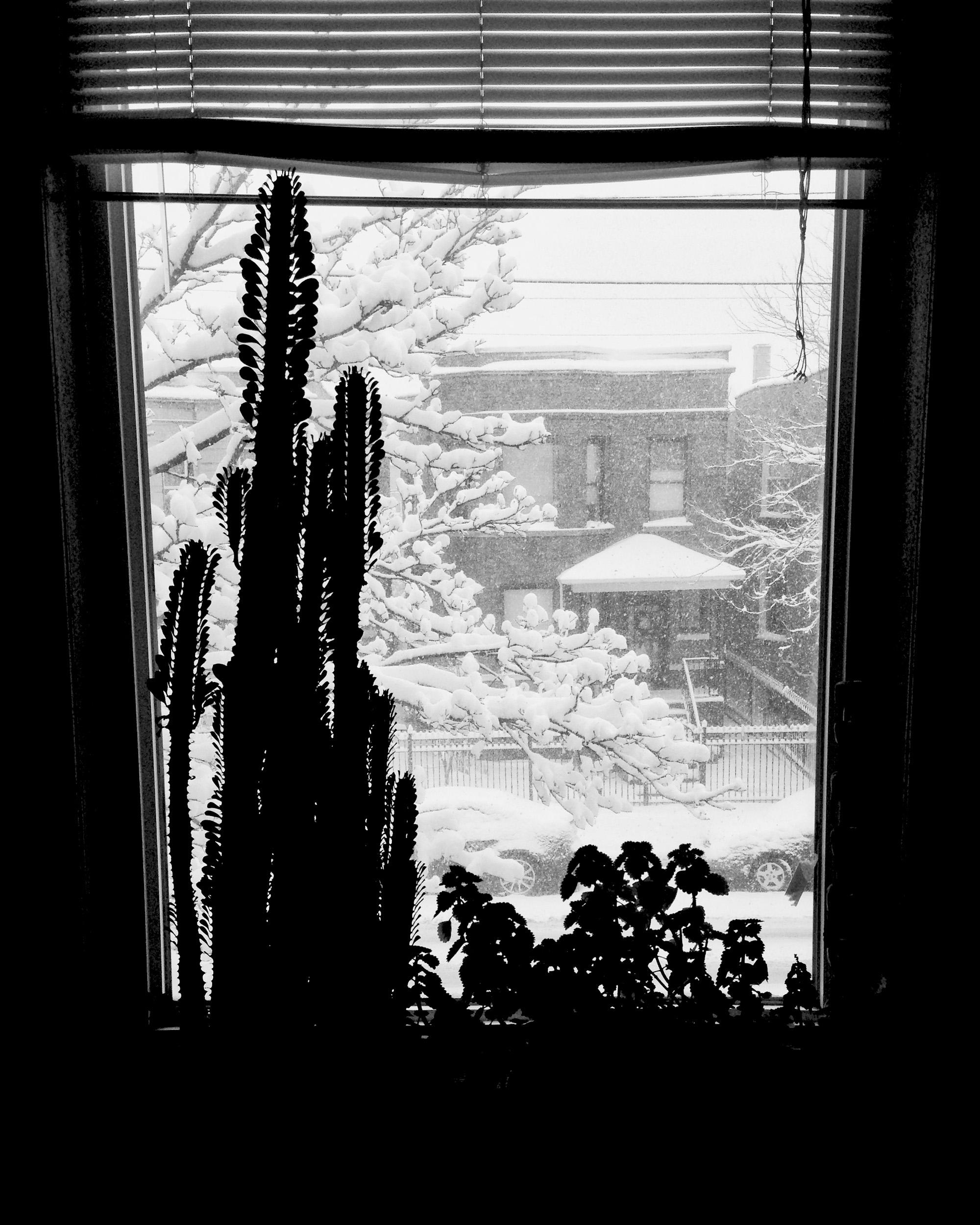
This past December, we took inventory and gave all the plants a good examination while insulating the windows. Carefully taking the euphorbia down from the windowsill, I realized how big it had gotten over the years. Its tallest arm easily reached my chin. The plant that started at 12″ tall was now almost as big as me.
When it came time to put it back in the window, I set it somewhat back from the frame. It stood for a few days, leaning precariously, its top-heavy limbs bowed by gravity’s pull. I hoped that the sun and its promise of chlorophyll would persuade it to straighten out, but as you may be able to guess, it didn’t quite work out that way. One recent evening I heard the unmistakeable sound of collapse. I watched, almost in slow motion, as the plant fell over the side of the table, onto the floor, and into a giant pile of dry soil and tangled limbs. Arms broke off. Its spines pierced its skin and released tiny beads of stale smelling white liquid.
Had this been my first plant, I probably would have cried. But I knew the deal. Some growth had been lost, but we would both recover. The drama was temporary and life would go on. The plant is now being held upright with the help of twine and the weight of a neighboring bookcase. It’s not the most visually pleasing solution, but it works. Since the fall, many leaves have crisped and died. The colors of the plant have darkened from emerald green to a deep eggplant. The cycles of growth and dieback are progressing as they usually would. The giant tumble was just a moment.
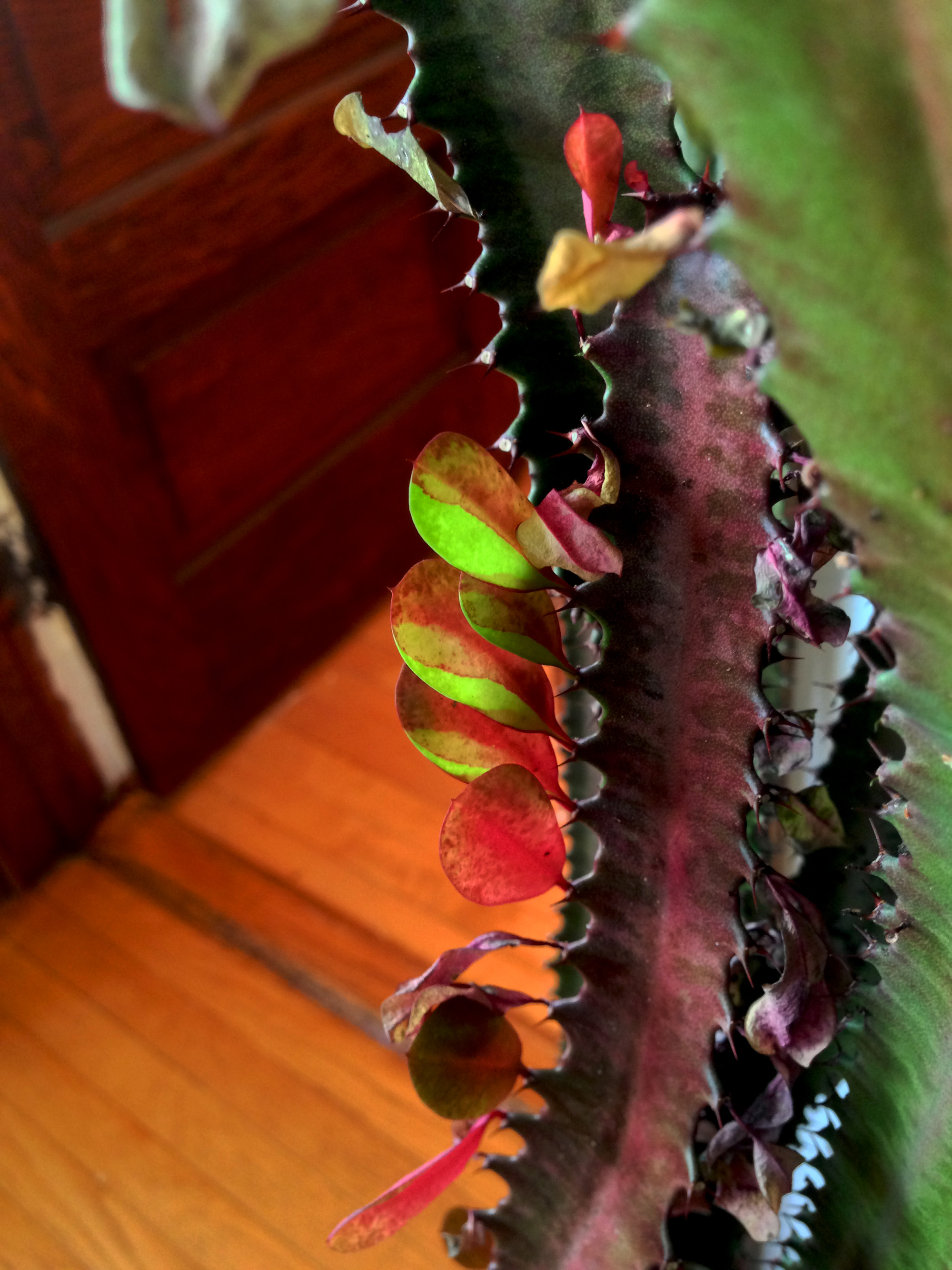
Living with plants has taught me a lot about myself. About what to get upset about, and what to let go. About how much effort to put into something, and what I should or can expect in return. About the joy of caring for something other than myself, and the joy of feeling cared for. About being observant and training myself not to take things for granted. I’m learning that I’m more capable of forgiveness than I used to be: toward others and toward myself. I have the plant to thank for that, the plant and its unrelenting forgiveness.
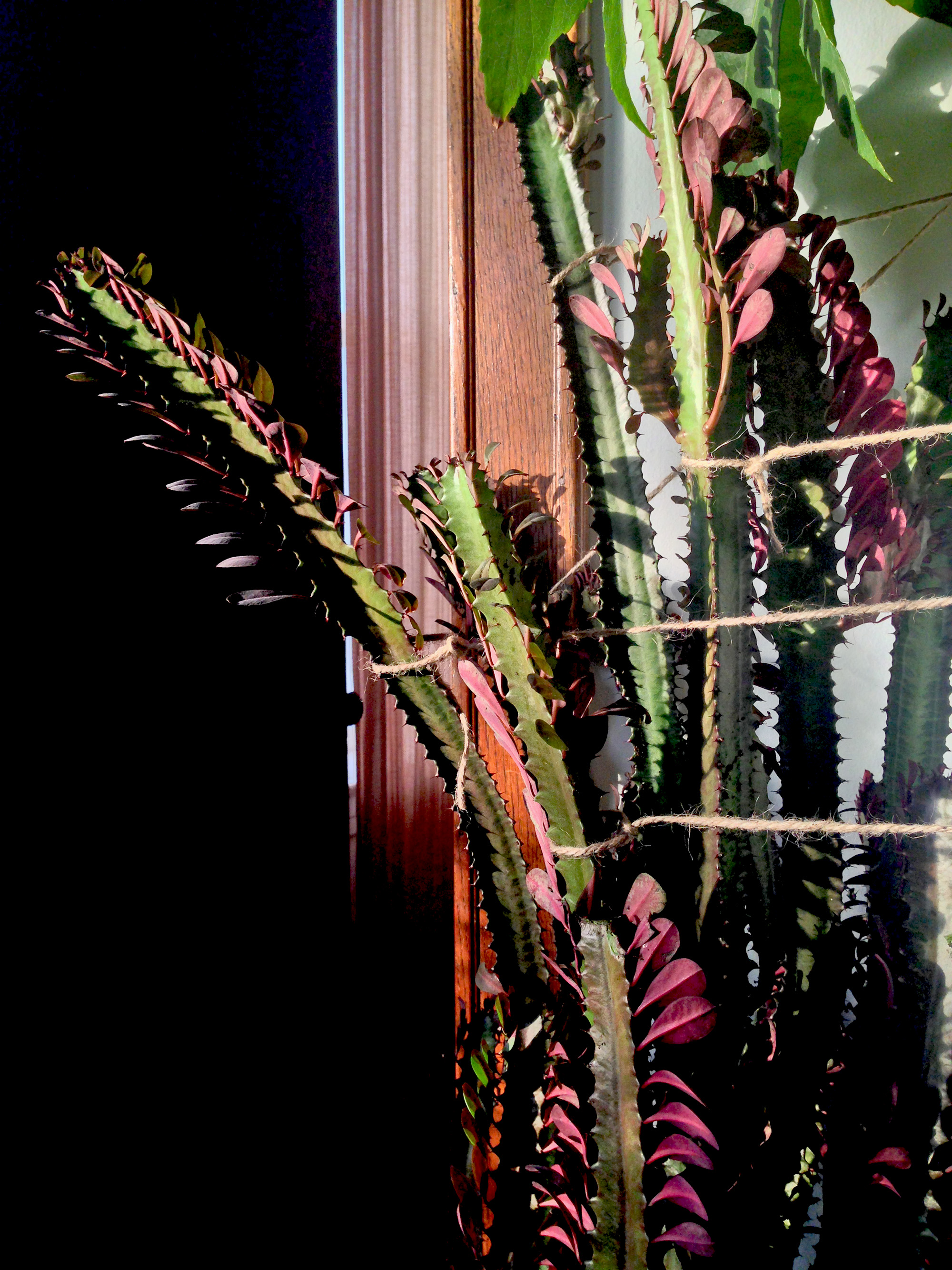

Hi, I’m hoping you can help. Mine is quite a few years old and was growing well as a beautiful bright green. Now it’s loosing its colour. Any suggestions of what I’ve done wrong?
Hi Rebecca – how much sun is yours getting during the day? For several months earlier this year, I had mine in a spot that didn’t give it direct sun AND I wasn’t watering it enough. It lost a lot of color (like what sounds like is happening to yours) and the arms were drying out. At the beginning of the growing season, I moved it back into a southwestern facing window and started giving it water more regularly and it now looks healthier and has a lot of new growth. Sun exposure, watering, drainage, pot size – all of these elements will affect how the plant grows. I’d recommend changing a couple things about how you’re caring for it and then watch patiently for any changes. I hope this helps!
hey!
so like you said about it turning from emerald green to eggplant, is that normal? i too have an african milk tree plant that seems to be turning purple at the very top. the back of some leaves have red/purple dots. i’ve had the plant for almost 1 year and it’s about 3 ft tall. it has been growing a lot recently and the tops portion is light showing new growth
Hi! That seems pretty normal to me! My guess is that the color of the plant has to do with a few varying factors (how much sunlight they get, what nutrients are in the soil, etc). It sounds like your plant is doing great. If it’s growing, I’d say keep doing what you’re doing!
An African Milk Tree plant, has been at the office give or take 5 years. A well sunned spot, with cool climate control. It now has progressing rusty reddish brown areas moving upwards, and some branches have become limp and fallen forward! Initially it was rarely watered, then we thought it was a bit dry, twice gave it @ 1/2 – 3/4 cup in a 3 – 4 month period. When browning appeared watering ceased. But it’s continued to progress up the branches, on most branches. Please advise/help. Thank you.
Hi!! I knocked mine off almost completely at the root!! Is there anyway to save it??